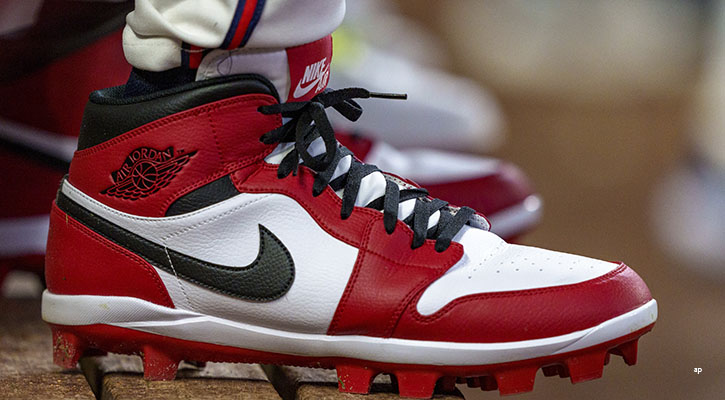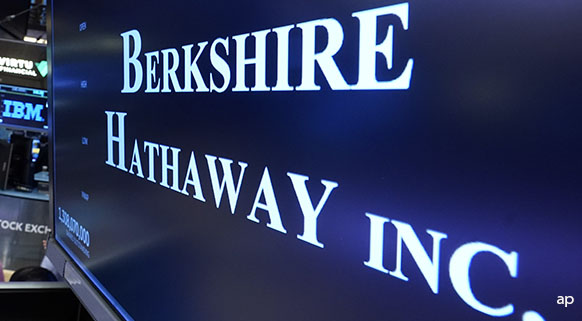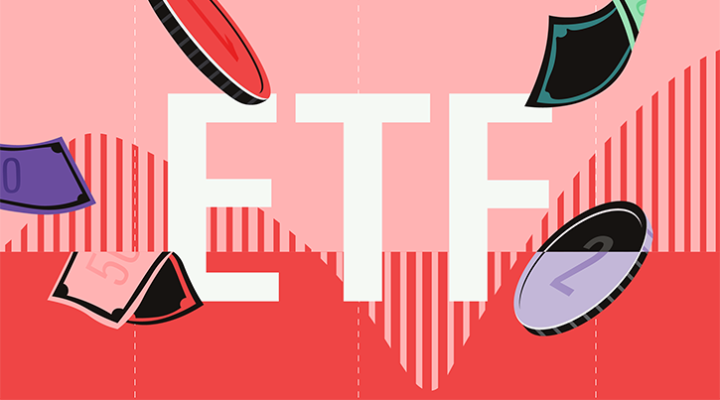
We view Nike NKE as the leader of the athletic apparel market and believe it will recover from its recent problems, such as a lack of product innovation, soft demand for sportswear, and a CEO change. Our wide moat rating is based on its intangible brand asset, as we believe it will maintain premium pricing and generate economic profits for at least 20 years. Nike, the largest athletic footwear brand in all major categories and in most markets, dominates areas like running and basketball with popular shoe styles. While it does face significant competition, we believe it has proven over a long period that it can maintain share and pricing.
Morningstar Metrics for Nike Stock
• Fair Value Estimate: $117
• Morningstar Rating: 5 stars
• Economic Moat: Wide
• Uncertainty Rating: Medium
Nike Fair Value and Profit Drivers
We are lowering our fair value estimate on Nike’s shares to $117 from $124. The company’s fiscal 2025 first-quarter earnings per share of $0.70 surpassed our $0.51 estimate. However, its quarterly sales fell 10%, and it guided to a slow recovery in sales and margins due to uncertain economic conditions in key markets and weak demand for some lifestyle and footwear products. Indeed, second-quarter sales are set to fall 8%-10%. Thus, for fiscal 2025, we have lowered our sales forecast to a 7% decline from a 5% drop previously, and our EPS forecast to $2.77 from $3.09. Our fair value estimate implies a fiscal 2025 price/earnings ratio of 42 and an enterprise value/adjusted EBITDA ratio of 30.
Despite the anticipated sales decline in fiscal 2025, we forecast compound average sales growth for Nike of 5% over the next 10 years. We expect it will achieve compound annual revenue growth of 2% in North America, perhaps slightly below expected market growth. We think Nike’s innovative products and e-commerce will allow it to hold its market position and premium pricing, but we acknowledge that the market has become very competitive. In Greater China, its fastest-growing segment prior to recent challenges (such as virus-related lockdowns and the forced labor controversy), we expect compound average growth of 11% over the next decade.
Although Nike’s fiscal 2024 gross margin of 44.6% was below fiscal 2022’s 46% on weak sales of some products and poor digital sales, we forecast a return to 46% in about two years as its sales growth returns in fiscal 2026 and as its inventory situation has improved. In the long run, we project gradual improvement to about 48% in 10 years. The firm may increase gross margins through greater production and distribution efficiencies, its shift to digital sales, product mix changes, and price increases.
Opportunities in China for Nike
We think Nike’s strategies allow it to maintain its leadership position. Over the past few years, it has invested in its direct-to-consumer network while cutting many wholesale accounts. In North America and elsewhere, the firm has reduced its exposure to undifferentiated retailers while increasing its connections with others that bring the Nike brand closer to consumers, carry a full range of products, and allow it to control the brand message. Nike’s consumer plan is led by its Triple Double strategy to double innovation, speed, and direct connections to consumers. The plan includes cutting product creation times in half, increasing membership in Nike’s mobile apps, and improving the selection of key franchises while reducing its styles by 25%.
Although its recovery in China has been slow due to economic conditions, native competition, and a political controversy, we still believe Nike has a great opportunity for revenue growth there and in other emerging markets. The firm experienced double-digit annual sales growth in six of the past nine fiscal years in Greater China and, fueled by high government investment in athletics, we think it will do so again after the current difficulties have passed. Moreover, with worldwide distribution and a huge direct-to-consumer operation that brought $21.5 billion in Nike brand digital sales in fiscal 2024, the firm should benefit as more people in China, Latin America, and other developing regions move into the middle class and gain broadband access.
Nike Bulls Say
• Although uneven of late, the global sportswear market should expand, especially in Asia and other developing areas. As the share leader in most countries, Nike is positioned to benefit.
• Nike’s restructuring efforts to achieve $2 billion in cost cuts and its Triple Double strategy (increased innovation, direct-to-consumer sales, and speed) should allow for improved margins.
• Somewhat depressed lately, we anticipate Nike’s gross margins will rise through automation, e-commerce, and higher prices. Nike is pulling back from undifferentiated retailers to increase full-priced sales.
Nike Bears Say
• As a worldwide business, Nike has felt the effects of issues like the war in Ukraine, shipping delays, currency volatility, and inflation. These and other issues could continue to impair its results.
• The Chinese sportswear market is increasingly competitive as nationalism has boosted native brands and as international brands like Lululemon expand. Nike must continue to lead this market to meet long-term profit goals.
• Nike’s dominance in running shoes has been challenged by the success of relative newcomers like Hoka and On. It has fallen behind some others on innovation.
Nike's Financial Strength
We believe Nike is in excellent financial shape to weather the many challenges facing the apparel industry, including elevated inventories, higher costs, a strong US dollar, and the impact of inflation on consumer spending. At the end of August 2024, Nike’s $10.3 billion in cash and short-term investments exceeded its debt of $9 billion. In addition, the firm had undrawn short-term credit facilities of $3 billion and a separate $3 billion commercial paper facility. Most of Nike’s long-term debt does not mature until after 2028, but it does have significant endorsement commitments of more than $1 billion per year. The firm, with its investment-grade credit ratings, could easily increase debt for stock repurchases or other uses. It may also make acquisitions, although these are likely to be technology-focused and fiscally immaterial.
We anticipate Nike will continue to return significant cash to shareholders. By our calculations, the firm produced about $18 billion in free cash flow to the firm over the past three fiscal years, and we estimate it will generate $27 billion in free cash flow over the next five. Nike issues about $2 billion in annual dividends, and we forecast its long-term dividend payout rate at about 40%. Moreover, it completed a $12 billion stock-repurchase program authorized in 2015 and has begun to repurchase stock under a four-year, $15 billion stock-repurchase program authorized in 2018. Over the next five fiscal years (including 2025), we forecast Nike will repurchase about $16 billion in stock.
Economic Moat
We assign a wide moat rating to Nike based on its brand intangible asset. Nike is the world’s-largest athletic apparel and footwear company, with global operations and more than $50 billion in annual revenue. Its sales have increased in 13 of the past 14 years, with the pandemic-affected fiscal 2020 as the sole exception.
• A key part of our wide moat rating, Nike benefits from the worldwide popularity of athletics and its products are available in most of the world’s industrialized and developing nations. The company ships products to more than 190 countries (with more than half its sales outside North America), has 6,000 or so branded stores that are operated by franchisees, primarily in Greater China, and directly operates more than 1,000 stores (two thirds outside of the US).
• At a global share of 18%, Nike's annual revenue is more than double that of the world's second-largest sportswear firm, narrow-moat Adidas (Euromonitor). In North America, its share of the sportswear market—estimated to be about $166 billion in retail sales—was 18.1% in 2023, far ahead of second-place Adidas’ 4.9% and third-place Lululemon’s 4.5% (Euromonitor). In Western Europe, with $71 billion in retail sales, Nike’s leading 17.9% share was 5.7 percentage points above Adidas. While these markets are highly competitive, we anticipate Nike will hold its leading positions due to its innovation, sponsorships, advertising, and the enduring popularity of its products.
• Sportswear is a relatively mature category in North America and Western Europe, but Nike has excellent growth prospects in China. The Chinese sportswear market is estimated at $58 billion at retail in 2024, roughly triple 2013’s level. Although athletics has not been part of its culture historically, China has hosted two Olympics and become a power in many sports due to massive government investment and growing opportunities. For example, hundreds of marathons are held each year in China, with leading races attracting tens of thousands of entrants. As the market leader with 23% sportswear share in 2023, Nike is positioned to benefit from China’s athletic aspirations. The company’s revenue in Greater China increased to $7.5 billion in fiscal 2024 from $3.9 billion in fiscal 2016, and we forecast compound annual average sales growth of 11% over the next decade. However, we are aware that Nike faces challenges from American and European firms in the region, as well as growing native competitors like narrow-moats Anta and Li Ning, which had market shares of about 20% and 10%, respectively, in 2023 (Euromonitor). Nike is responding to these threats with new flagship stores, greater marketing, and products designed specifically for Chinese consumers.
• Very high visibility is a significant part of Nike’s success, and it benefits from the immense popularity of athletics. For example, Nike is heavily involved with global football (soccer), and more than 40% of the world’s people are fans of the sport, per WorldAtlas. Indeed, there are more than 200 countries with national men’s football teams, and more than 120 have women’s national teams as well (FIFA). The vast reach of athletics benefits Nike as it sponsors many of the world’s most popular athletes, leagues, and teams in virtually all major sports. For example, it is the uniform provider for each of the three-largest sports leagues in the US (NFL, NBA, and MLB). Individuals sponsored by Nike include many of the world’s most famous athletes, including Cristiano Ronaldo (football/soccer), Kevin Durant (basketball), and LeBron James (basketball), all three of which have the equivalent of lifetime deals with the brand.
• Nike’s success in sports sponsorships largely stems from its more than 40-year relationship with Michael Jordan. More than 20 years since the basketball great retired, Nike’s Jordan premium sub-brand remains the gold standard for sports marketing, generating $7 billion in wholesale-equivalent sales in fiscal 2024 alone. Nike’s relationships with athletes at all levels gives it visibility and credibility that no other company in its industry has amassed.
• While marketing is important, Nike needs to offer quality products to maintain its position. We believe the firm’s technical innovations contribute to its brand and support our wide-moat view. It has been known for its innovative products ever since it introduced running shoes with pressurized air in their soles in the 1980s. Nike produces shoes for many sports, but its most important shoes may be those made for runners. Recent editions to its large family of running shoes include Epic React (foam cushioning), VaporMax, and shoes with ZoomX technology. Nike claims the ZoomX substance was developed for the aerospace industry and returns as much as 85% of energy to the runner. While it may be hard to prove such a claim, the firm’s dominance in running shoes is clear as the category produces about $4 billion in annual sales. Indeed, most of the world’s leading track and field athletes wear Nike shoes, as do millions of amateur runners. As for basketball and international football, about three quarters of NBA players wear either Nike or Jordan, while about half of the players in the 2022 FIFA World Cup wore Nike cleats.
• Nike supports its innovation with high investment in research and development. Its annual research and development spending exceeds $500 million, or about 1% of sales. While its competitors also invest in innovation, their total spending is less due to their smaller revenue bases. In 2023, Adidas’ research and development expenditure was EUR 151 million, while that of no-moat Puma was EUR 89 million.
• Nike offers products in many channels and at many price points, but it achieves premium pricing on key products, supporting our view of its brand power. The firm has always been led by footwear, which accounts for about two thirds of its sales. Many styles of its athletic shoes regularly sell for more than $150 per pair, putting it at or near the top of the market in many categories. Nike also offers limited-edition shoes at high prices, such as the footwear offered through a 2022 collaboration with Louis Vuitton that retailed for about $3,000 per pair. Moreover, there is a large secondary market for Nike shoes, with many styles commonly changing hands at more than $1,000 per pair. For example, the Nike-Louis Vuitton items commonly sell for thousands of dollars above original retail prices on resale sites. We regard Nike’s ability to sell high-priced items in large quantities as support for a brand-based intangible asset.
• We do not believe Nike has a moat based on a cost advantage. Although Nike may have some cost edge over competitors in sponsorships due to its status as the premier sportswear brand, we don’t view this as significant or maintainable. Moreover, endorsements are great for brand building, but they are difficult to quantify in terms of profit margins. On the production side, Nike has limited advantage in the procurement of raw materials and other costs as virtually all its production is outsourced to factories that serve other sportswear firms as well. Narrow-moat Shenzhou International, for example, is one of Nike’s largest suppliers but also produces apparel for Adidas, Puma, and others.
• Our view is that Nike’s moat is based solely on its brand intangible asset. While Nike’s financial resources and relationships with suppliers likely allow for production investment unavailable to others in the short term, any advantage in this area is likely to be transitory. Further, competing producers can probably gain access to similar technologies. Moreover, much of apparel manufacturing remains manually intensive. Competing products to Nike’s footwear and clothing are widely available. As such, we do not believe there is any network effect or efficient scale in the apparel business, and switching costs are nonexistent.
Risk and Uncertainty for Nike Stock
Our Morningstar Uncertainty Rating on Nike is Medium. Nike struggled with supply chain problems and excess inventory in the 2021-22 period but has made progress in fixing these issues.
Nike is vulnerable to weakness in US physical retail. Department stores that carry its products have been downsizing and cutting orders. However, the firm should be able to make up for slowness in some areas of retail through its direct-to-consumer sales.
As a global business, Nike is affected by economic conditions in many parts of the world. Consumer spending on the company’s products has been uneven due to inflation, war, currency movement, trade restrictions, and other issues.
The athleisure trend and growth in activewear has attracted new competition. While Nike is the market leader in many categories and in most markets, competitors like Hoka and On have emerged as challengers. Nike is under constant pressure to release new products that resonate with consumers and may miss sales projections if it fails to do so.
We do not believe the environmental, social, and governance risks that affect Nike will materially impact its financial results or investment prospects. Nonetheless, the firm tends to be a lightning rod for controversy due to its high visibility. There are ongoing controversies concerning the treatment of its female and minority employees, its efforts to reduce taxation, and the treatment of workers in its supply chain. Moreover, Nike has become entangled in a forced labor controversy in China that has caused a consumer backlash in the country and international criticism. Any lasting effects on its operations in the nation could be damaging, as China is the fastest-growing sportswear market in the world and Nike's most profitable region. We may revisit our view of Nike’s ESG risks if any of these controversies endanger its profit potential.
Nike's Capital Allocation
We assign an Exemplary Capital Allocation Rating to Nike. In the 15 years between October 2009 and October 2024, Nike generated an average annual total return to investors of 13% (includes dividends). Nike is the largest US-based apparel firm and the largest athletic apparel company in the world. Its adjusted ROICs, including goodwill, have averaged 34% over the past five years, well above our estimated weighted average cost of capital on the company of 8%.
Elliott Hill, a Nike veteran of more than 30 years, was named to replace John Donahoe as CEO. We do not expect that this change will affect the firm’s capital allocation policies.
Nike has a strong balance sheet, having operated in a net cash position for most of the past decade. Although the firm issued $6 billion in unsecured notes when the pandemic hit in the spring of 2020, we believe this was just a precaution, and that the firm now has more cash than it needs to fund operations and capital return plans. We forecast Nike will generate an annual average of $5.3 billion in free cash flow to the firm over the next five years. Most of Nike’s long-term debt matures after 2028.
We think Nike has created value through acquisitions and dispositions. In 2003, Nike bought Converse for just $305 million. Converse, known for its casual athletic canvas shoes, had gone bankrupt in 2001 and had just $205 million in sales in 2002, but Nike resurrected it. In fiscal 2024, Converse produced $2.1 billion in sales and nearly $500 million in operating profit. While Nike continues to own Converse, it has divested other brands. In 2012, for example, it sold Cole Haan for $570 million, 24 years after it had bought it for $95 million. In 2019, Nike sold Hurley, which it had acquired in 2002, for an undisclosed amount. We view dispositions of niche brands as beneficial to shareholders as they allow Nike to focus on its core business.
Nike has returned significant cash to shareholders through dividends and stock buybacks. The company issues about $2 billion in yearly dividends, and we expect its long-term dividend payout ratio will be roughly 40%. Nike also returns cash to shareholders through buybacks, having repurchased about $8 billion in shares over the past two fiscal years. The company has reduced its share count by roughly 15% over the past decade, and we expect it will repurchase $16 billion (net) in stock over the next five years. We believe companies increase shareholder value when repurchasing shares below our fair value estimates, as has recently been the case for Nike.





























